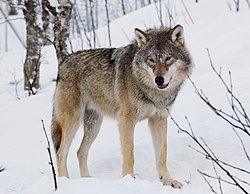Ostrothia
Republic of Ostrothia Ostrii Vabariik | |
|---|---|
| Motto: Isamaa eest! For Fatherland! | |
| Capital and | Rõlva |
| Official languages | Ostrothian |
| Demonym(s) | Ostrothian |
| Government | Unitary Parliamentary Republic |
• President | Leana Aarma |
• Prime Minister | Artur Jõeäär |
| Legislature | Rahvakogu |
| Area | |
• | 63,400 km2 (24,500 sq mi) |
| Population | |
• Estimate | 2,890,000 |
| GDP (PPP) | 2021 estimate |
• Per capita | $52,543 |
| GDP (nominal) | estimate |
• Total | $58.97 billion |
• Per capita | $25,752 |
| Gini (2021) | 38.4 medium |
| Currency | Ostrothian Mark (OMK) |
| Date format | yyyy-mm-dd |
| Driving side | right |
| Calling code | +530 |
Ostrothia (Ostrothian: Ostrii), officially the Republic of Ostrothia (Ostrothian: Ostrii Vabariik), is a country in Astyria. Ostrothia covers a total area of 63,400 km2 (24,478 sq mi), and is influenced by a humid continental climate. Rõlva, the capital of Ostrothia, and Laadu are the largest cities and urban areas in the country. Other notable cities include Haku, Novessaare, Jõhku and Soulu. The official language of the country, Ostrothian, is a Finnic language.
Ostrothia is a developed country, with a high-income advanced economy. Ostrothia is a democratic unitary parliamentary republic divided into sixteen counties. It has a population of 2.8 million. Ostrothia has consistently ranked highly in international rankings for quality of life, education, digitalization of public services and the prevalence of technology companies.
History
Geography
Ostrothia is a relatively low lying nation with an abundance of lakes, bogs and forests. Average elevation reaches only 50 metres (164 ft) and the country's highest point is Lõuna mägi in the south at 350 metres. There is 5,600 kilometres of coastline marked by numerous bays, straits, and inlets.
Ostrothia has a number of islands dotted around its coast. Ostrothia has over 2,000 lakes. Most are very small, with the largest, Lake Võit, being 2,150 km2. There are many rivers in the country. The longest of them are the Rõva, Rõlva which the capital of Ostrothia takes its name and Pätsemaa. Ostrothia has numerous fens and bogs. Forest land covers 48% of Ostrothia. The most common tree species are pine, spruce and birch.
Climate
Ostrothia is a northerly nation. The climate is more continental in the eastern part of the country and more maritime in the western part. Ostrothia has four seasons of near-equal length. Average temperatures range from 17.8 °C (64.0 °F) inland in July, the warmest month, and from −1.4 °C (29.5 °F) inland in February, the coldest month. The average annual temperature in Ostrothia is 6.4 °C (43.5 °F). Annual average precipitation is 662 mm. The average for the year is 1829.6 hours of sunshine. The duration of sunshine is highest in coastal areas and lowest inland in northern Ostrothia.
Enviroment
Ostrothia agreed to cut carbon emissions by at least 20% of 1990 levels by the year 2020 and by at least 40% by the year 2030. Also, by 2020 at least 20% (27% by 2030) of the country's total energy consumption should be from the renewable energy sources. In 2016, Ostrothia introduced especially effective container deposit legislation, which resulted in collecting 92% of all packagings in 2017.
Ostrothia does not have high mountains and its landscape is dominated by blooming meadows, dense forests and fertile fields of cereals. However it stands out by the abundance of hillforts. Ostrothia is a particularly watered region with more than 2,000 lakes, mostly in the northwest. The country is also drained by numerous rivers.
Forest has long been one of the most important natural resources in Ostrothia. Forests occupy half of the country's territory and timber-related industrial production accounts for almost 11% industrial production in the country. Ostrothia has five national parks, 18 municipal parks, 500 nature reserves, 1,668 state-protected natural heritage objects.
Biodiversity
Ostrothian ecosystems include natural and semi-natural (forests, bogs, wetlands and meadows), and anthropogenic (agrarian and urban) ecosystems. Among natural ecosystems, forests are particularly important to Ostrithia, covering 48% of the country's territory. Wetlands (raised bogs, fens) cover 7% of the country, with 52% of wetlands having been lost due to drainage and peat extraction between 1952 and 1983. Changes in wetland plant communities resulted in the replacement of moss and grass communities by trees and shrubs, and fens not directly affected by land reclamation have become drier as a result of a drop in the water table. There are 23,000 rivers with a total length of 59,000 km in Ostrothia.
Agricultural land comprises 32% of Ostrothia's territory (roughly 70% of that is arable land and 30% meadows and pastures), approximately 400,000 ha of agricultural land is not farmed, and acts as an ecological niche for weeds and invasive plant species. Habitat deterioration is occurring in regions with very productive and expensive lands as crop areas are expanded.
The wildlife populations have rebounded as the hunting became more restricted and urbanization allowed replanting forests (forests already tripled in size since their lows). Currently, Ostrothia has approximately 250,000 larger wild animals or 5 per each square kilometer. The most prolific large wild animal in every part of Ostrothia is the deer, with 200,000 of them. They are followed by boars (48,000) and the largest one: moose (~12,000). Among the Ostrothian predators, wolves are the most common (~29,000). The large animals mentioned above exclude the rabbit, ~280,000 of which may live in the Ostrothian forests.



